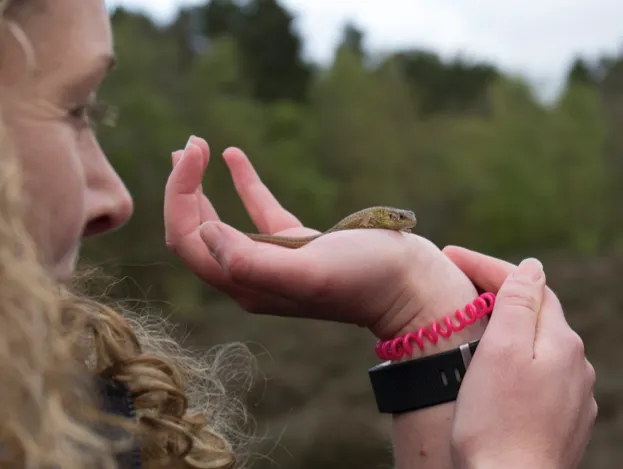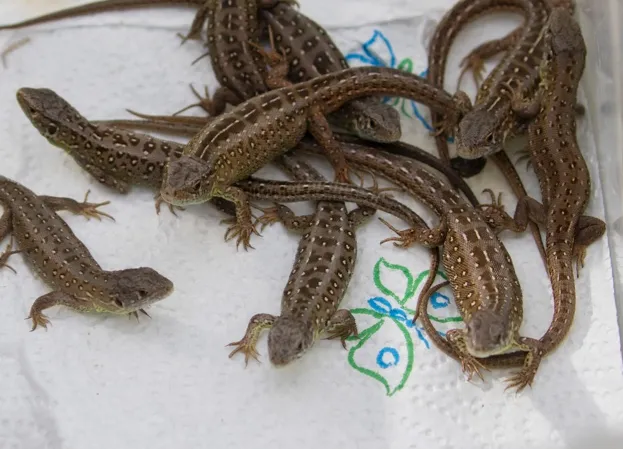Sand lizards have been relocated to Farnham Heath nature reserve in a joint project by the RSPB and Amphibian and Reptile Conservation (ARC).
The species was first reintroduced to the restored heathland at Farnham Heath in 2012 but a fire started by an illegal camper three years later destroyed some of the reserve.
The damage has since been repaired and the populations of rare wildlife species are being boosted by relocated individuals, including sand lizards and field crickets.
“In partnership with ARC, we are building a more resilient UK population, by boosting the numbers we have here at Farnham,” says warden Mike Coates.
“Over the past six years we’ve worked to restore and create the perfect heathland habitat for these amazing creatures and we hope this will allow numbers to continue to grow in the coming years.”

The sand lizard is one of the six native species of reptile in the UK, and one of the three native lizard species.
It is the only UK lizard to lay eggs (oviparity), as both common lizards and slow worms give birth to live young.
“With their bright, exotic appearance these reptiles would look more at home in a desert or Mediterranean island, but in fact sand lizards are native to the UK. Sadly, their numbers have plummeted in recent decades and they are in desperate need of our help,” continues Coates.
The species occurs on heathland, and is limited to only a few colonies due to habitat loss and fragmentation – the UK has lost almost 80 per cent of its heathland since the start of the 1800s.
The 21 young sand lizards were taken from a nearby site and released onto sandbacks at Farnham Heath.

“Habitat fragmentation - in the form of intervening roads or development – can be a real barrier for wildlife so reintroductions are a great way of putting native species back on suitable sites that they would be unable to reach on their own,” says Ralph Connolly, field officer and volunteer co-ordinator for ARC. “If you are lucky you may see the sand lizards basking on south-facing heather banks.”
